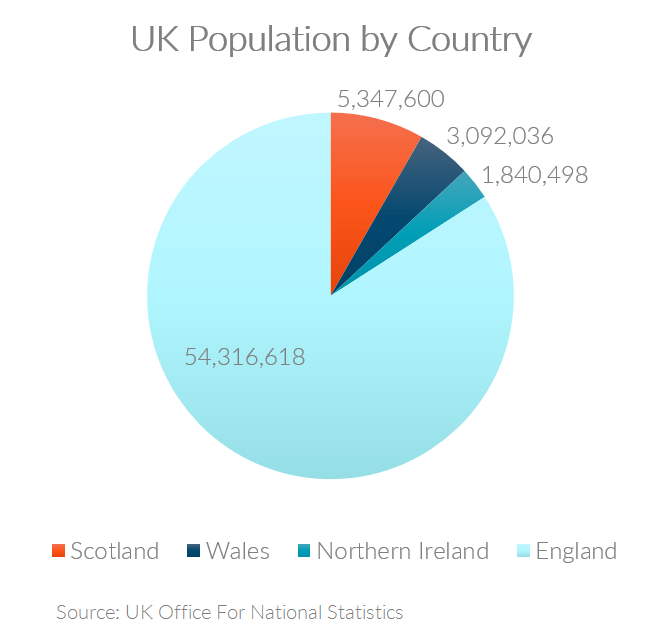The population of England is a dynamic and evolving subject that reflects the country’s rich history, cultural diversity, and economic developments. As one of the most populous countries in Europe, understanding the population dynamics of England is essential for various sectors, including government policy, economic planning, and social services. In this article, we will delve into the population statistics, demographics, and the factors influencing population growth in England.
In recent years, England has experienced significant changes in its population structure, influenced by migration patterns, birth rates, and aging demographics. The insights provided here will not only highlight current population figures but also explore historical trends and future projections. By the end of this article, you will have a comprehensive understanding of the population of England, its implications, and the ongoing changes that shape this vibrant country.
Let’s embark on this journey to explore the intricacies of England’s population, examining the statistics, demographics, and various factors that contribute to the overall figures. This knowledge is not just academic; it plays a vital role in shaping public policy and understanding the needs of the population.
Table of Contents
- Current Population of England
- Historical Trends of Population Growth
- Demographics of England
- Factors Influencing Population Growth
- Migration Patterns in England
- Age Distribution in England
- Urban vs Rural Population
- Future Projections for England's Population
Current Population of England
As of the latest estimates, the population of England stands at approximately 56 million people. This figure makes England the most populous country in the United Kingdom, accounting for about 84% of the UK's total population. The population density is notably high, with around 432 people per square kilometer, making England one of the most densely populated countries in Europe.
Population Distribution
The population distribution across England is uneven, with the majority residing in urban areas. Greater London alone accounts for a significant portion of the population, with over 9 million residents. Other major cities such as Birmingham, Manchester, and Leeds also contribute to the densely populated regions.
Historical Trends of Population Growth
Examining historical trends provides insight into how the population of England has evolved over the centuries. The population has seen a steady increase since the 19th century, largely due to improvements in healthcare, nutrition, and living conditions. Key historical events, such as the Industrial Revolution, played a crucial role in urban migration and population growth.
Population Milestones
- 1801: Population of England was approximately 8.3 million.
- 1901: Population reached around 30 million.
- 2001: Population recorded at approximately 49 million.
- 2021: Estimated population is about 56 million.
Demographics of England
Demographics encompass various aspects such as age, gender, and ethnicity, which are critical for understanding the population structure. England is known for its ethnically diverse population, which has been shaped by centuries of immigration.
Ethnic Composition
The most recent census data indicates that around 80% of the population identifies as White, with significant minority communities including South Asian, Black, and Mixed ethnicities. This diversity enriches the cultural landscape of England and contributes to its global significance.
Factors Influencing Population Growth
Several factors contribute to the population growth in England, including birth rates, death rates, and migration. Understanding these factors is essential for predicting future population trends and planning accordingly.
Birth and Death Rates
The birth rate in England has seen fluctuations over the years, influenced by economic conditions and social changes. Currently, the birth rate is approximately 11.5 births per 1,000 people, while the death rate stands at about 9.4 deaths per 1,000 people, resulting in a natural population increase.
Migration Patterns in England
Migration is a significant factor in shaping England’s population. The country has a long history of both internal and international migration, which has contributed to its cultural diversity.
Types of Migration
- International Migration: This includes immigrants coming to England for work, education, or family reunification.
- Internal Migration: Movements within the country, often from rural to urban areas in search of better opportunities.
Age Distribution in England
The age distribution of England’s population is an important factor for social planning and resource allocation. As of the latest statistics, the population is aging, with a growing proportion of individuals aged 65 and over.
Age Groups
- 0-14 years: Approximately 18% of the population.
- 15-64 years: About 77% of the population.
- 65 years and over: Roughly 20% of the population.
Urban vs Rural Population
England is predominantly urban, with about 83% of the population living in urban areas. This urbanization trend has implications for infrastructure, housing, and public services.
Challenges of Urbanization
Rapid urbanization presents challenges such as housing shortages, transportation issues, and environmental concerns. Addressing these challenges is crucial for sustainable development.
Future Projections for England's Population
Looking ahead, the population of England is projected to continue growing, albeit at a slower rate. Factors such as fertility rates, migration patterns, and aging will influence future population dynamics.
Population Projections
By 2030, England’s population is expected to reach around 59 million, with an increasing proportion of elderly individuals. This demographic shift will require adaptations in healthcare, housing, and social services.
Conclusion
In summary, the population of England is a multifaceted topic that encompasses various factors including demographics, migration, and historical trends. Understanding these elements is vital for effective policy planning and resource management. We encourage you to engage with this topic further by leaving comments, sharing your thoughts, or exploring other articles on our website related to population studies.
Closing Thoughts
Thank you for taking the time to explore the population of England with us. We hope this comprehensive overview has provided valuable insights. We invite you to return for more informative articles that delve into various aspects of society, culture, and demographic changes in England and beyond.
Jill Dan: A Comprehensive Guide To Her Life And Career
Exploring The Beauty And History Of Spanish Cathedral Veils
Rutgers Protest Today: A Comprehensive Overview Of Recent Events

![Countries of the UK sized according to population [1368 x 885] r/MapPorn](https://i2.wp.com/i.redd.it/07zu990lli7x.png)
